Recipients:

Central administration, regulator

Participants of the electricity market

Contractors and subcontractors

Investment environment

Industry organisations

Scientific and research institutions

Employees and potential employees

Media
Our activities and ensuring the continuity of electricity supply determine the quality of Poles’ lives.
It is PSE’s particular concern to ensure the security of employees and contractors’ personnel providing services to our company.
We are a modern organisation fostering an innovative working environment We care about the development of internal competences and infrastructure. We want to constantly strengthen the unique knowledge base in the organisation and the expertise of PSE’s staff responsible for maintaining a secure and stable power system.
We want to strengthen awareness and educate society in the field of electricity market operation.
Impact on the quality of Poles’ lives owing to continuous electricity supply
Electricity is present in all moments of human life in the 21st century. We cannot imagine even one day without electricity. Even a short power cut disrupts work and leisure, and a longer one poses a hazard to life and health.
One day without electricity would mean a morning without your favourite cup of coffee and daily news on the radio or television, traffic jams on your way to work in the absence of traffic lights, discomfort at work without lighting, computer, fixed-line phone and office equipment, and an evening without your favourite series or film. A longer blackout would paralyse hospitals, airports and railway stations which are packed with equipment that need uninterrupted electricity supply. While those entities usually have their back-up power generators that can temporarily support their operation, in case of a long power outage their operation would be limited to evacuation or to stopping passenger traffic. This would lead to the risk of loss of life or health and would translate into financial losses of the affected entities running into millions of zlotys.
Szczecin without electricity – April 2008 (source: TVN 24)
The inhabitants of Szczecin and the suburban districts suffered a blackout throughout Tuesday. The blackout was caused by... nature, specifically by a heavy sleet storm, with power line pylons breaking under the snow load. If at least one of the four extra-high and high voltage lines feeding the left-bank side of Szczecin had resisted the weight of wet snow, the local CHP plants would have been able to operate normally.
Return to the past (source: TVN 24)
Chaos prevailed in Szczecin. Trains and buses did not run, office and most shops were closed. Long queues formed in from of the ones that remain open. Szczecin’s hospitals treated only emergencies. However, as the city authorities emphasised from the beginning, patients’ safety was never at risk. The fire service provided the establishments with substitute power generators. Still, in some of them planned procedures were cancelled. Two hospitals had difficulties with water supply, which prevented the operation of dialysis stations, but water was supplied to them by tanker trucks.
GRI 103-1 How to live in the vicinity of a line?
In principle, the owners of properties on which transmission equipment is situated or over which there are power lines, have an unconstrained access to their property.
The only restrictions of property owner’s access to the land on which transmission equipment is situated or over which there power lines, concern the so-called line right-of way which is set out along the entire length of the power line.
It is the area directly under the power lines and on both sides of the line, in which work involved in line construction, reconstruction, upgrade and maintenance is allowed, and within which, for reasons of safety of line operation and the immediate surroundings, freedom of land management is restricted. This results from the need to perform periodic inspections and repairs, and is necessary for remedying possible failures and their consequences.

Facts worth knowing
The width of the right of way depends mainly on the line voltage rating and the type (series) of pylons used. The boundaries of the line right of way are set out on the basis of the requirements of regulations on the electric and magnetic field limits, and the noise limit.
The average width of the right of way for different types of extra high voltage lines operated in the country does not exceed: for 400 kV lines: 40 and 35 m from the axis, depending on the line design, and for 220 kV - 25 m from the line axis on both sides.
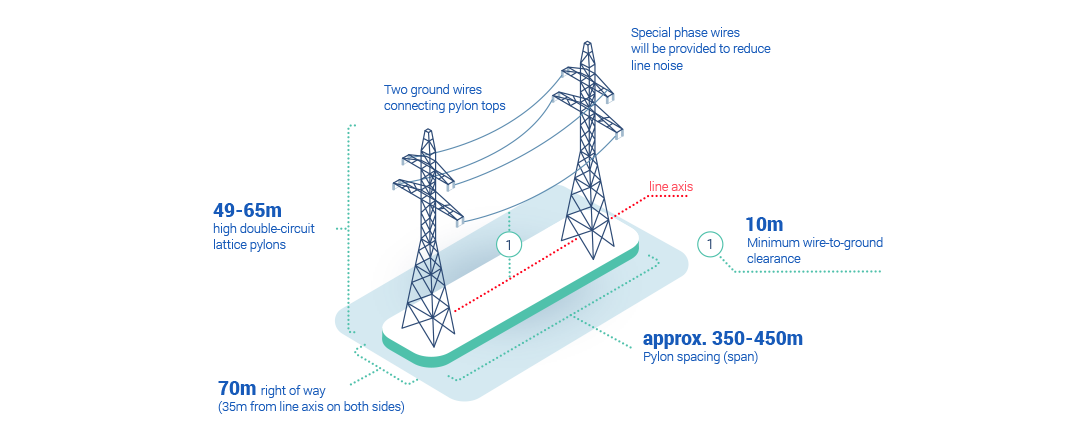
Fig. 1. Right of way for a 400 kV line.
Source: http://liniapilaplewiska.pl/rozwi%C4%85zania-techniczne-i-technologiczne.html
Outside the right-of-way, the owners of the land on which transmission facilities are situated or above which there are power lines, have an unconstrained freedom or managing and using their plots. They can use them freely, provided that they exercise appropriate precautions. They can also, without time limitations, conduct business with the use of specific equipment and machinery, or it can carry on farming activities. Owing to the need to ensure safety and minimise the risk of interruption or restriction of electricity supply, it is necessary to follow specific precautions.
Learn a few rules concerning conduct in the vicinity of power lines:
- Owing to high voltage, it is not allowed for unauthorised persons to climb pylons and touch transmission equipment, in particular power lines.
- For safety reasons, it is not allowed to erect new residential buildings or new built structures with rooms intended for human occupation directly under the line or within its right of way (the area directly under the line and on its both sides).
- Owners of cropland, on which transmission equipment is situated are allowed, with the exclusion of the foundation sites of supporting structures (pylons), to cultivate crops and work with the use of heavy farming equipment: harvesters, tractors, seeders, and other mechanical farm machines. Precautions must be taken in doing so, e.g. in situations where the machines or equipment used are high or have long arms.
- Under overhead lines or in their immediate vicinity, there are no restrictions concerning cattle or other breeding animals grazing, or obstacles to setting up fish ponds. According to reference studies and date disclosed by the World Health Organisation (WHO), electromagnetic fields in the extra-high voltage line environment are not harmful to breeding animals.
- Owing to the potential risk of power lines being touched by tree branches, it is not allowed to plant trees that could grow dangerously close to power lines. PSE maintains continuous monitoring of the facilities owned by the company. In case of above-standard growth of trees or shrubs in the vicinity of lines, relevant clearing work is carried out. The work is carried at the behest and at the expense of PSE, and the wood material obtained as a result of clearing is transferred to property owners. Our company conducts tree clearance based on a five-year standard, with the contractor giving a four-year warranty for its work. The distance of wires from tree crowns is thus determined according to the current crown dimensions, taking into account the five-year height growth specific to the particular tree species and habitat. In case of an above-standard growth during the warranty period, additional work is carried out immediately at the contractor’s expense. Clearing work is required only under specific circumstances, i.e. in situations where decorative or orchard trees are planted, which do not reach significant heights, such work is not necessary.

Facts worth knowing
Outside the designated right of way, no adverse environmental impact can occur. In addition, stringent requirements are met, imposed on residential development areas, and there no grounds to restrict the use or to exclude from use any larger areas.
How PSE activities translate into the transmission tariff
and electricity bills
Electricity transmission from power plants to consumers is possible over an extensive transmission infrastructure. Infrastructure ownership is associated with the need to perform operation, maintenance and repair procedures, and to undertake necessary, economically justified expansion in order to address changes arising e.g. from an increase in demand and from the energy consumption structure in the country, as well as the change of the structure and location of generating sources.
Maintaining the required quality parameters of electricity supplied mand ensuring PPS operation security is associated with the need to purchase ancillary services provided by participants of the electricity market, in particular by generators.
Financing of expenses related to the transmission business, i.e. investment costs and expenditure, is based on the rules set forth in the applicable legal provisions, and expenses are covered by income from transmission services based on the application of the company’s Tariff approved by the President of the Energy Regulatory Office (ERO).
The tariff is a set of prices and fee rates, and conditions for their use developed each year on the basis of planned, reasonable costs of business, and return on capital employed in transmission activities, intended for financing of investment projects. The costs providing a basis for the calculation of fee rates for transmission services are subject to assessment by the President of ERO who approves the Tariff in an administrative procedure.
The PSE Tariff contains:
- fee rates calculated on the basis of the cost of transmissio9n activities and return on capital,
- fee rates not calculated by the TSO and unrelated directly to the company’s statutory activities:
- transitional fee, connected with the PPS access service,
- RES fee, connected with ensuring the availability in the PPS pf electricity from renewable sources.
Income derived by PSE accounting for the above-mentioned fees is delivered in its entirety to Zarządca Rozliczeń SA, a company dealing with their redistribution to generators.
Structure of fees in PSE’s tariff
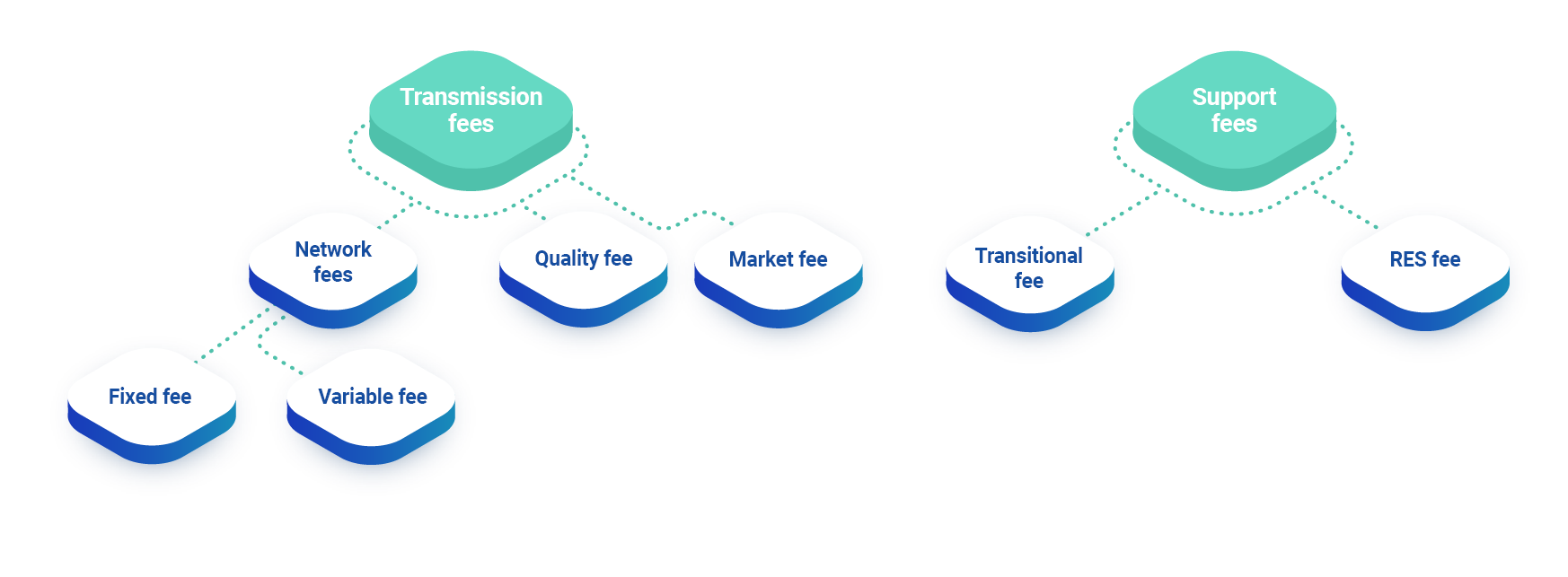
Fig. 2. Structure of fees in PSE’s tariff
According to the electricity market operation model in Poland, PSE settles accounts for transmission services with consumers physically connected to the transmission network within the territory of Poland, i.e..:
- distribution system operators (DSOs), for whom the costs of acquisition of services from PSE represent justified costs of business and are taken into account in calculating their tariffs for electricity distribution services.
- final consumers.
Designated consumers – physically connected to our network – are thus responsible for all costs taken into account in calculating the transmission fee rates and support fee rates.
Generators do not pay transmission fees in respect of feeding electrical energy into the network. They only pay the quality fee – for the quantity of electricity consumed by final consumers connected to their networks, facilities and equipment, to whom they sell electricity.
Traders do not make any tariff payments to PSE, except the market fee, which is applied only to electricity imported into Poland from Ukraine.

Facts worth knowing
In the case of consumers connected to the distribution network, i.e. to the network owned by DSOs – including households, the cost of electricity supply, in addition to costs related to DSOs’ activities also includes PSE’s operating costs, i.e. those related to the purchase of transmission services from the TSO by DSOs.
In addition to the costs of electricity purchase (as commodity), a consumer of electricity also incurs the cost of its delivery (transmission and distribution) and the costs arising from support fees.
The costs of PSE on our electricity bill

Fig. 3. PSE tariff fees in the household electricity bill

Facts worth knowing
The average net rate of the fee for transmission services provided by PSE in 2017 (without rates for support fees, i.e. without the transitional fee rate and the RES fee rate) represented only approx. 4.7% of the average gross rate for households. The net rate of the RES fee and the transitional fee represented 0.6% and 4.3%, respectively.
Structure of the household final consumer’s electricity bill in 2017
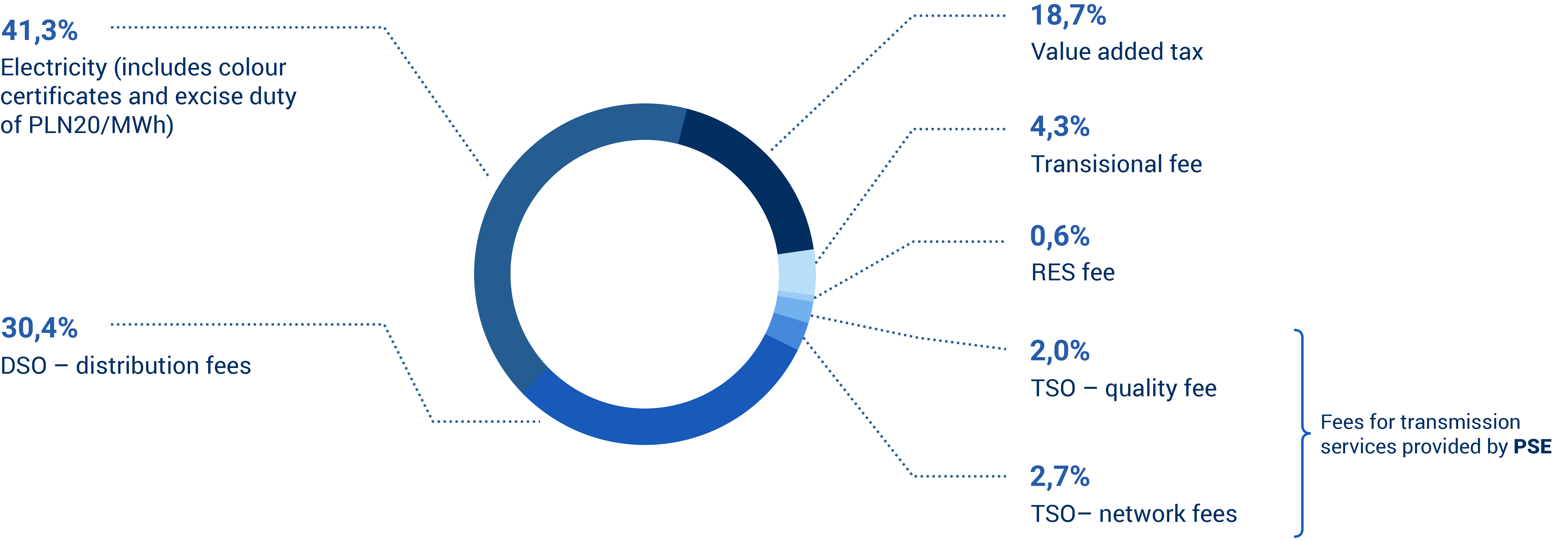
Fig. 4. Structure of the household final consumer’s electricity bill in 2017

Facts worth knowing
The bill amount for household final consumers is affected mainly by: the price of electricity (taking into account “colour” certificates), costs related to the provision of distribution services by DSOs, and value added tax.
PSE’s HR development priorities
One of basic objectives of an effectively operating organisation is the sustainable and consistent support to the development of employee’s competences leading to the achievement of results in line with strategic plans. At PSE, we seek to ensure that every employee knows the development opportunities of their career path, and has access to training necessary for the effective fulfilment of tasks.
GRI 103-1Employee development management pillars at PSE
Management of employee development at PSE rests on three pillars:
Pillar I. 70-20-10 Model
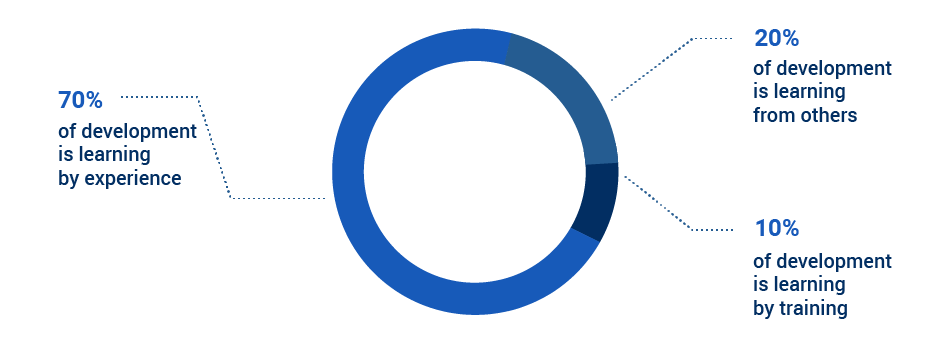
Fig. 5. 70-20-10 Model
The 70/20/10 model developed by the staff of the Center for Creative Development in the USA – Morgan McCall, Robert Eichinger and Michael Lombardo assumes that:
- 70 percent of knowledge is what we gain through daily work, facing the challenges of daily work, e.g. through:
- undertaking projects in order to develop a particular skill,
- using the acquired knowledge in practice,
- undertaking tasks that go beyond the basic duties.
Therefore, 70% of planned development activities should be related to on the job work focused in the development of what are called “functional competences”.
- 20 percent of knowledge is feedback and support from superiors and peers.
For this reason, work appraisal feedback meetings, giving advice and ongoing contact with peers are important.
- 10 percent of knowledge is gained through training and literature, i.e. all kind of formal sources of knowledge.
Pillar II. Knowledge sharing during internal training sessions
In many areas of our company’s activity, we create unique solutions and build knowledge which cannot be acquired in the market. Our internal training programme allows us to manage knowledge at our organisation in a system-based manner. Our priority is to build a team of internal trainers supporting better knowledge management in the organisation.
Pillar III. The employee’s active attitude in personal development and development planning
On addition to providing employees with off-the-shelf training solutions and enabling them to participate in external courses, training events and conferences, we also take measures aimed to increase employee motivation to actively develop their own competences and self-learning.
Competence model
GRI 103-1GRI 103-2 In 2017, we started work on a new competence model taking into account dynamic changes taking place at PSE – a set of competences of particular significance from the point of view of our company.
The objective our efforts is to build a team which is capable of fulfilling the corporate mission and pursuing its strategy at all levels of the organisation in the most effective manner. This objective is achieved through measures including:
- strengthening competences and knowledge at all levels of the organisation,
- continuous development and acquisition of personnel with the highest competence level,
- strengthening the image of PSE as a solid and good employer.
Maintaining a high competence level is the expectation of both the organisation and the people working with it. Development opportunities are a key factor affecting the employee commitment level. Expanding employees’ knowledge and skills guarantees the organisation’s development.
The developed model currently being implemented is based on our strategy and forms an important element of the personnel policy pursued. The model provides for the implementation at PSE of management through competence, knowledge, skills and attitudes. It is an integrator of all human resource management processes based on it and thus constitutes a uniform, consistent policy of human resource management. Its implementation will enable, among other things, better adjustment of training programmes to current needs, will improve the efficiency of recruitment processes and build career paths, and will facilitate the introduction of new tools to assess the level of employee competences, which will increase the level of motivation and efficiency of our work.
Competence model
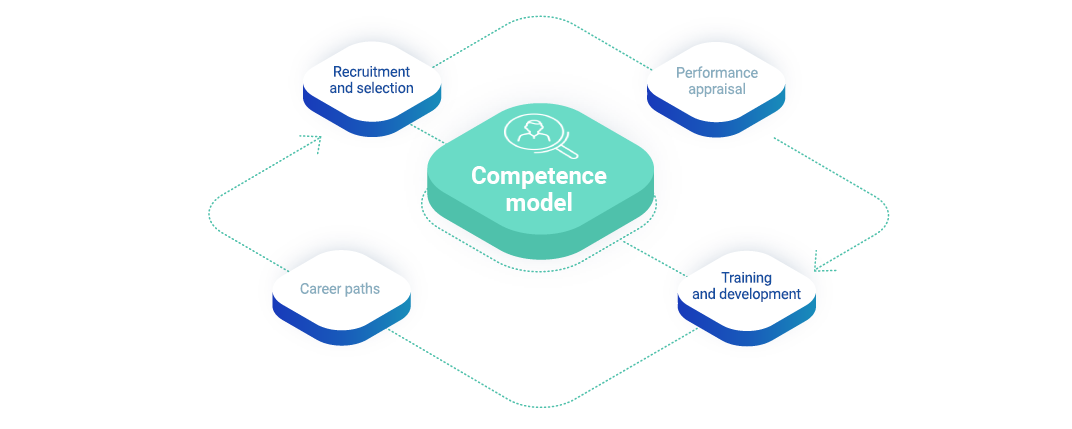
Fig. 6. Competence model
GRI 404-2GRI 103-1Training catalogue
In 2017, the training catalogue was created, intended for all employees of our company. In the catalogue, we propose various types of training adjusted to the PSE competence model being developed. Our objective is to continuously update and expand the offer so that the training products made available in the catalogue best address the needs of the organisation and the employees. We assume that the training catalogue will evolve as PSE’s needs change.
The catalogue has been prepared in such a way as to optimise the selection of training within the available budget in terms of effective fulfilment of tasks and the employee’s diagnosed needs, as well as the company’s objectives. It will be a tool that facilitates the systematic development of knowledge, skills and qualifications of our employees.
Training products are divided in the catalogue into five categories:
1. Manager Academy management training – improving managerial and leadership skills. They are offered to the executive and management staff. Participation in three meetings during a year is mandatory, but the choice of the type training depends on the individual needs of each manager.
2. Specialised and expert training – concerning the subject matter closely related to the substantive nature of work in a given area or in a given job position.
3. Training developing soft skills – improve personal skills and support the effective task-oriented work.
4. Adaptation, preliminary, periodic and on-the-job training – covering all employee groups irrespective of functional areas and hierarchies. Provide basic, universal knowledge which is essential at work.
5. Industry conferences. .
Impact indicator

Table 1. Management by Objectives training
GRI 103-1 GRI 103-2 Energy Internship programme
Since 2013, the Young Talent Promotion Programme has been held at PSE, which consists of the Start with Energy scholarship programme and the Energy Internship programme. In line with the company’s strategy, owing to the above programmes, the most talented power engineering students and university graduates are acquired to work with the company. In 2017, in promoting the internship programme and building a positive image as an employer, our company participated in job fairs at Warsaw University of Technology.
The Energy Internship programme provides for the employment of selected persons under contracts of employment for a period of 10 months. During that period, the interns develop their knowledge under the guidance of a mentor assigned to them. After the internship period, the intern can be employed on a permanent basis.
In 2017, we employed 20 interns under the Energy Internship programme – the largest number in the five-year history of the programme (in the years 2013-2016, the total number interns employed was 8 persons). We also employed the participant of the first edition of our scholarship programme Start with Energy, who graduated from university with outstanding grades.
GRI 103-1 Development programmes
Having regard to the nature of the activity pursued, the development programmes at our organisation focused mainly on ensuring a correct operation of the PPS. For this reason, in 2017, dedicated development programmes intended for maintenance and dispatching personnel were important elements of development activities.
We have also modified the Manager Academy programme. In order to ensure that training is better tailored to needs, the training products have been made available in the form of a catalogue, from which everyone can choose interesting subjects for themselves. The flexible formula of the catalogue provides the employees with a tool for proposing subjects which they believe should be made available to a wider group of employees.
PSE wins the Good Employer 2017 award
The award was granted to us by the Chapter of the 10th – Jubilee – Social Responsibility Leaders National Programme held under the patronage of the Institute of Philosophy and Sociology of the Polish Academy of Sciences.
The Chapter of the Programme unanimously recognised the building of good relations with employees, which are an important element of the Responsible Business principles being implemented at the company. In particular, focus was placed on: cyclic monitoring of employees’ needs through organisation health (OHI) checks, employee development, for which we earmark substantial amounts each year (training, foreign language courses, studies, etc.), incentive system, employee benefit package, comprehensive and modern adaptation programme for new employees Compass for Start. What also won appreciation were the programmes focused on building identification with the company, including the Kid’s National Dispatch Centre and SMART PSE – as a programme aimed to create an organisation capable of quick adaptation, with a culture of innovation and flexibility.
Impact indicator

Table 2. Results of OHI survey
404 Education and training
GRI 103-1 The unit responsible for following PSE's HR policy is the Human Resource Management Department. Its key task is to provide business support to the company by recruiting and retaining competent employees. The Department implement PSE's strategy taking into account the current needs of employees and the capabilities of the entire organisation. Its activities are preceded by an analysis of training needs, taking into account substantive issues and the need to improve the competence level in response to changes in the external environment.
We offer our employees different forms of professional improvement:
- participation in external and internal training,
- participation in industry conferences and seminars,
- foreign language learning,
- subsidies to higher education.
In 2017, all employees of PSE were covered by development programmes. The activities focused on the expansion of knowledge and professional skills related to ensuring the proper functioning of the Polish power system. Systematic training delivered to operating and dispatching personnel is one of the prerequisites for the correct performance of the TSO's obligations. In 2017, the development programme was extended both to the employees of the company head office and those employed in branches. Other training activities included expanding and reinforcing employees' knowledge in the fields of law, taxation and accounting, and advanced IT and technological solutions. Our company also developed employee competences related to the operation of computer systems and supported the management staff in improving effective management skills.
Performance appraisal, Management by Objectives and new bonus system
In 2017, a new, simplified performance appraisal system was introduced. The previous five-grade scale was simplified to three grades:
N – unacceptable,
A – acceptable,
S – special.
All employees of our organisation are subject to performance appraisal. In specialist positions, the appraisal is performed on a quarterly basis (provided that at least 1/3 of the billing period has been worked).
The management staff, legal counsel and experts were covered by the Management by Objectives system. The system provides for the implementation strategic objectives cascaded by the Management Board to the respective managers, based on the strategy adopted by the company. Management by Objectives is a complex and result-oriented method of appraisal. It is also conducive to increasing the involvement of staff in pursuing strategic objectives and facilitates the monitoring of the implementation of objectives.
The introduction of the system for management staff was preceded by training courses and workshops which involved all staff. The consequence of the introduction of Management by Objectives for management staff, legal counsels and experts is a new bonus system based on an objective appraisal of work performance. Appraisal of performance against objectives and payment of bonuses takes place on a semi-annual basis.
|
GRI 404-3 |
Values (%) |
|---|---|
|
Percentage of employees of the organisation receiving regular performance and career development reviews, by gender |
100 |
|
Women |
100 |
|
Men |
100 |
Cooperation with social partners
According to the provisions of the Trade Unions Act and the Employee Information Act, our company cooperates on a daily basis with its social partners. The following social organisations operate at PSE:
As part of the cooperation, amendments are negotiated to the PSE Company Collective Bargaining Agreement, the Labour Rules, and the Company Social Welfare Fund. The company also enters into agreements on: the rules of system-based pay rises, topping up prepaid cards on the occasion of the Power Engineer's Day and Christmas, and the rules for payment of extra bonuses. The trade unions and the Workers' Council receive semi-annual and annual reports on issues such as: the utilisation of the wage fund, components of the pay incentive system, employment, organisational changes, and the economic and financial standing of the company. In addition, cyclic meetings are held at PSE with all trade unions, at which issues are discussed including employee matters.
|
GRI 102-41 Number of employees covered by a collective bargaining agreement |
Values |
|---|---|
|
Percentage of employees covered by a collective bargaining agreement (relative to all employees) |
100 |
*The Company Bargaining Agreement (ZUZP) applies to all employees. It governs, first of all, the mutual rights and obligations of the parties to the contract of employment, including benefits closely related to work
GRI 103-1Job evaluation
The initiative covers the implementation at PSE of job evaluation in terms of performance and competence, taking into account market data relating to the industry and local labour markets. In addition to revaluation and analysis of internal pay equity, with setting the direction of pay policy for the years ahead, a new grade matrix and remuneration table will be created that will allow employees to be promoted who play a key role in achieving strategic objectives. The incentive system will stimulate employees’ activity and initiative.
The initiative will also ensure a simpler and more effective design of the remuneration system, in particular by limiting its components. The basis for the operation of incentive systems will be the Management by Objectives (MBO) system for the management staff, as well as assigning tasks to employees and billing their performance.
Pay level and employment conditions
|
GRI 401-1 |
Number of employees |
Number of employee hires |
Percentage of new employees |
Number of employees |
Number of employee hires |
Percentage of new employees |
|---|---|---|---|---|---|---|
|
2017 |
2016 | |||||
|
Women |
478 |
72 |
15.06 |
386 |
49 |
12.69 |
|
Men |
1,780 |
188 |
10.56 |
1,496 |
111 |
7.42 |
|
Total* |
2,258 |
260 |
11.51 |
1,882 |
160 |
8.50 |
*Number of employees as at the end of 2016 and 2017.
Impact indicator
Equivalent of additional benefits
GRI 103-1 GRI 401-2 Employee health-promoting benefits and programmes
All employees can use dedicated additional benefits
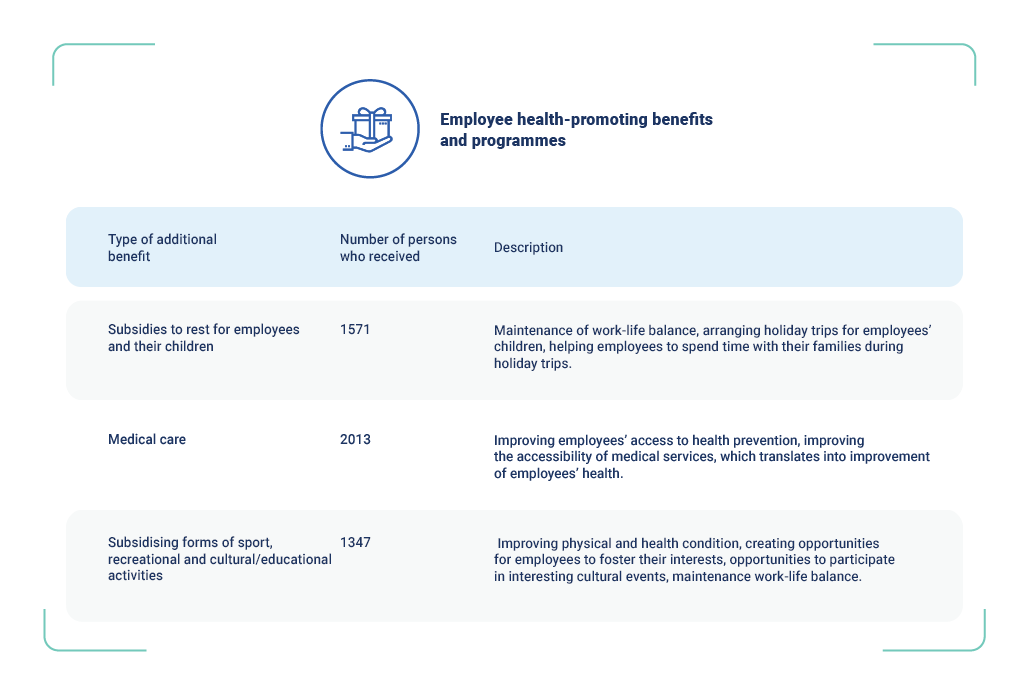
Work based on the highest standards of safety
GRI 103-1Activities promoting work safety
We consolidate work safety culture thr4oughout the organisation. For this purpose, we have adopted Life Saving Rules. It is a set of general rules of conduct referring to the greatest risks related to the company’s activities. The rules are addressed to PSE’s employees and associates. They are formulated as catch phrases demanding specific actions. The LSRs are displayed both at our offices and at substations.
Rules:
- Keep safe distance! – due to the risk to health and life caused by electric shock and arc burning while live working or working near live equipment;
- Follow the work order and use checklists! – for work on grid assets under conditions of special risk based on a written order;
- Observe safe organisation of work in the power sector!
- While working at heights, protect yourself and your tools against falls!
- Always use working clothes and shoes, as well as personal protective equipment where required!
- Drive safely!
- React to and report dangerous situations!
Meetings with employees
We attach great importance to OHS, health, environmental and quality standards. In the year under review, our organisation delivered training to PSE employees on safety culture related to the working environment.
The sub-goal of the training was to change the perception of work safety among employees – engaging them all in the monitoring of the working environment in order to achieve the primary goal:
- zero accidents with regard to people,
- zero accidents with regard to the natural environmental,
- zero accidents with regard to the equipment, plant and vehicles used and with regard to quality assurance.

Facts worth knowing
Safety culture at our company is an integrated management system which is aimed to maintain a maximum level of safety of people, the natural environment, equipment and infrastructure. The system covers the analysis of threats, active supervision and monitoring of the employee’s working environment, environmental protection and quality of work, as well as the technologies and equipment used.
OHS Committee
The OHS Committee operates at our company, which is composed of equal numbers of the employer’s representatives (including representatives of the OHS function and a physician providing health care services to employees), and employees (including the Social Labour Inspector). The Committee is chaired by a person authorised by the employer – an employee of the Working Environment Management Office, and its vice-chairperson is the Social Labour Inspector. The Committee operates at PSE level, with local organisational units.
The Committee’s responsibilities include performing reviews of working conditions and periodic status assessments of OHS, issuing opinions on measures taken by the employer to prevent accidents at work and occupational diseases, and drafting conclusions concerning the improvement of working conditions.
| GRI 403-1 Workers representation in formal joint management–worker committees for occupational health and safety | Unit | 2017 | 2016 |
|---|---|---|---|
| Number of OHS committee members | Number | 19 | 18 |
| Percentage of employees who work for organisations represented in formal committees for occupational health and safety (consisting of management and employees), advising on occupational health and safety schemes and monitoring such schemes | % | 100% | 100% |
In 2017, two accidents at work were reported at PSE, of which one accident was classified as an accident equivalent to accident at work.
Accident rates


New HSEQ requirements for contractors implementing investment projects
In order to improve safety at work on investment projects carried out for PSE, our organisation has created new HSEQ requirements. They specify the conditions for health, safety, environment and quality management during the execution of works.
Key issues contained in the requirements:
- Documentation, planning – HSEQ plan, ERP plan, analysis of threats and risk to the task;
- Training, training and competence;
- Reporting of information on safety security policy;
- First aid;
- Procedure in the event of fire;
- Chemicals;
- Working clothes, working footwear, personal protective equipment;
- Equipment and machines;
- Welfare conditions;
- Environmental protection;
- Contractor’s liability;
- Inspections and audits;
- HSEQ supervision.

Facts worth knowing
Since 2017, HSEQ requirements have been an integral part of investment documentation of tendering procedures conducted by PSE.
Meeting with contractors on work safety
The subjects discussed at a conference of PSE’s Central Investment Unit with contractors included the new HSEQ standards introduced to improve safety at projects implemented for PSE. The participants of the meeting included representatives of companies that carry out tasks contracted by PSE. The following issues were discussed at the meeting:
- HSEQ requirements,
- HSEQ checks performed by PSE at project sites,
- reporting and analysing events related to the working environment,
- building and promoting a system of safety culture among businesses performing investment tasks,
- engaging employees in improving safety,
- establishing and enforcing requirements concerning compliance with regulations and principles related to the HSEQ system among contractors implementing investment tasks,
- unification of working tools serving the improvement of the event prevention system, preventing events at source.
HSEQ in figures
Number of detected unsafe conditions (UCs) and unsafe acts (USa); number of HSEQ checks
During the period between May and December 2017, were recorded • 1,533 HSEQ observations including:
- 1325 unsafe conditions (UCs),
- 182 unsafe acts (USs),
- 26 positive observations.
During the period between May and December 2017, 184 HSEQ checks were carried out.
Detected unsafe conditions (UCs) had the following priorities:
- High – 433
- Medium – 710
- Low – 182
Detected unsafe acts (USa) had the following priorities:
- High – 79
- Medium – 98
- Low – 5
